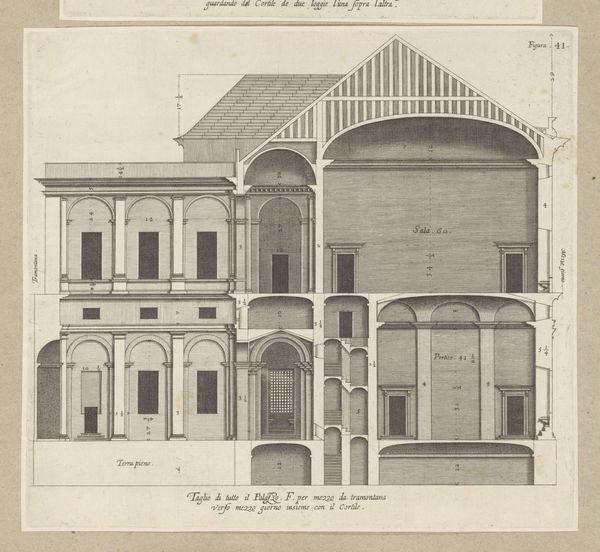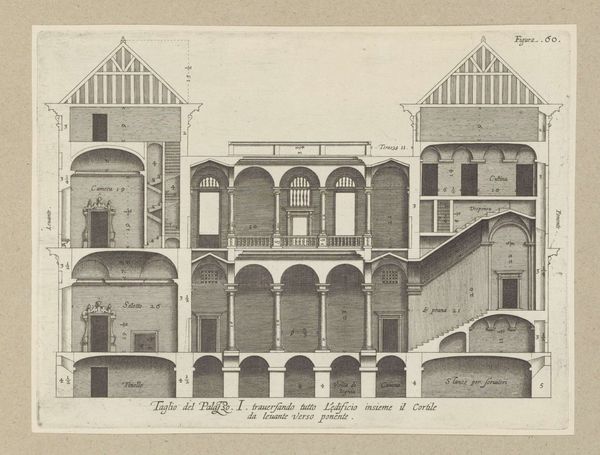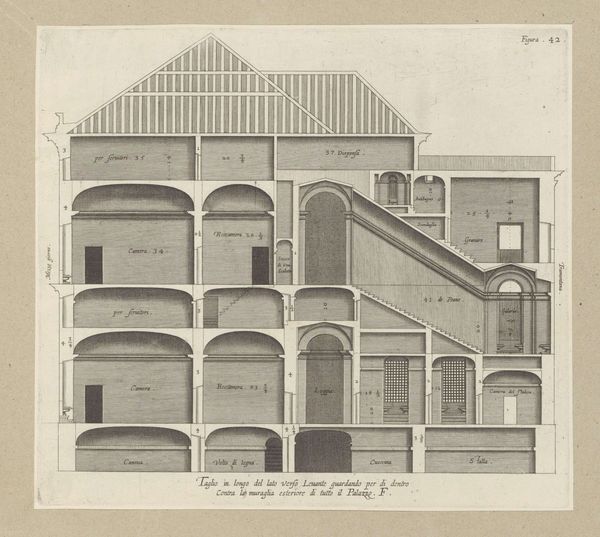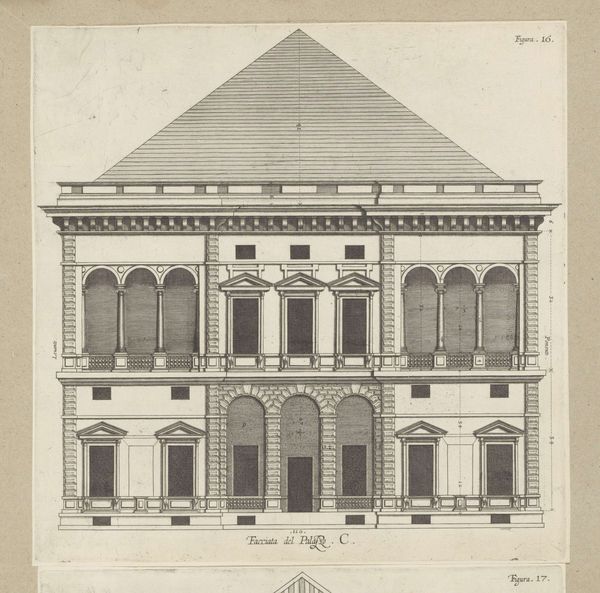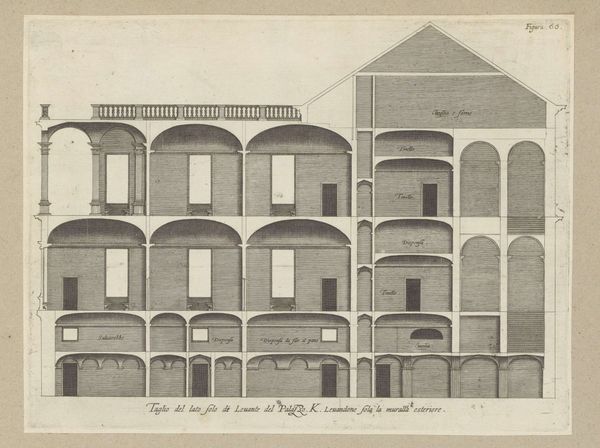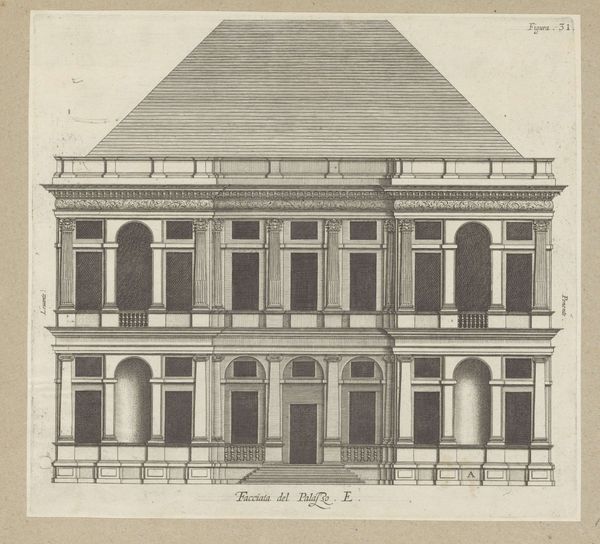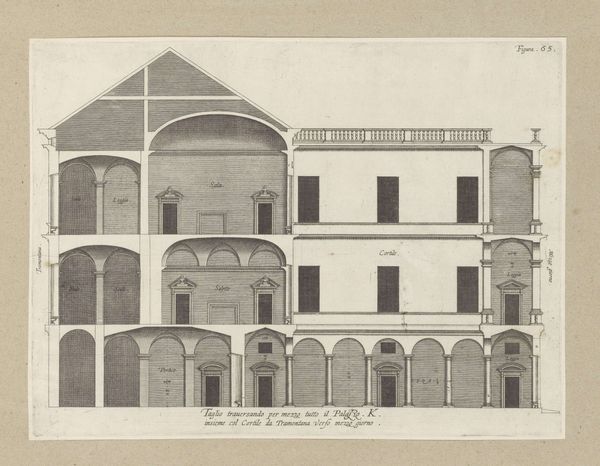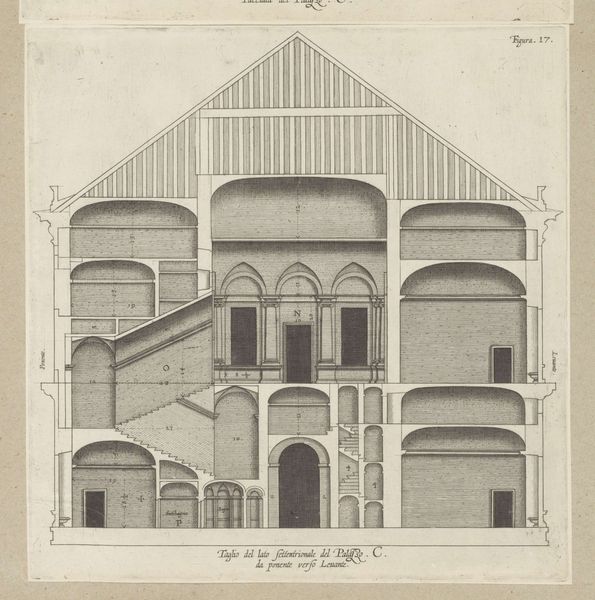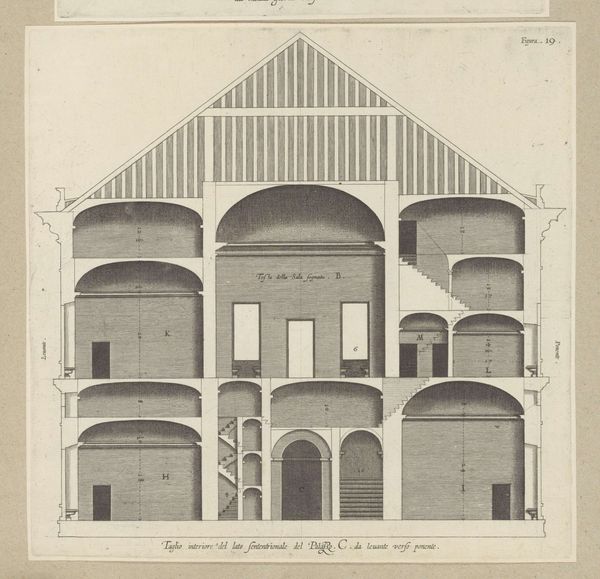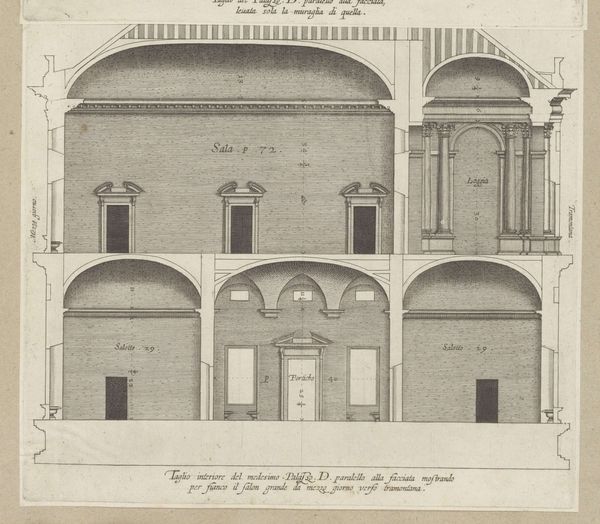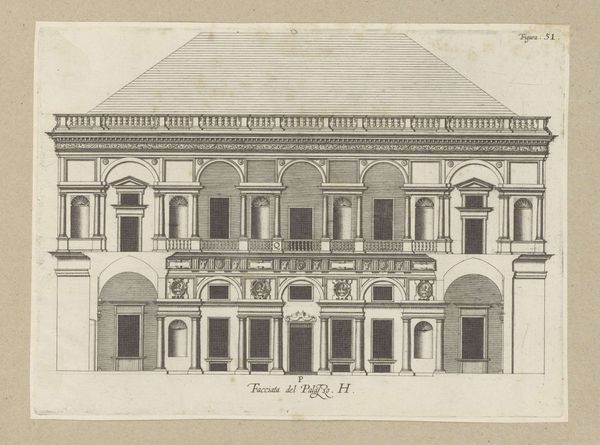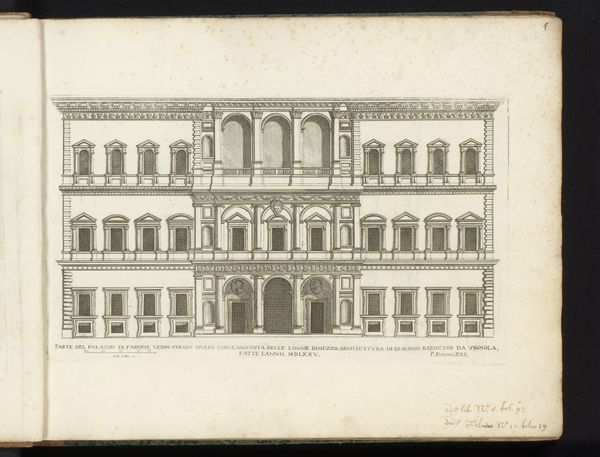
drawing, engraving, architecture
#
drawing
#
perspective
#
form
#
geometric
#
line
#
cityscape
#
italian-renaissance
#
engraving
#
architecture
Dimensions: height 256 mm, width 260 mm, height 583 mm, width 435 mm
Copyright: Rijks Museum: Open Domain
This print, "Cross-section of the Palazzo Spinola in Genoa," was made by Nicolaes Ryckmans sometime before his death in 1645, using engraving. Look closely, and you'll see that the entire image is made up of tiny lines incised into a metal plate, demonstrating the artist's incredible skill. The print is a technical drawing, and would have been an essential tool for architects, builders and patrons. Notice the level of detail in its representation of the interior spaces, the thickness of the walls, and the height of the ceilings, all precisely measured. These details reflect the Renaissance fascination with proportion, order, and mathematical precision, as well as the patronage networks between the artists and the wealthy families who wanted to build these luxurious palaces. The print's primary function was to circulate architectural ideas and technical know-how, rather than aesthetic expression. This makes us ask: where do we draw the lines between art, craft and design?
Comments
No comments
Be the first to comment and join the conversation on the ultimate creative platform.
